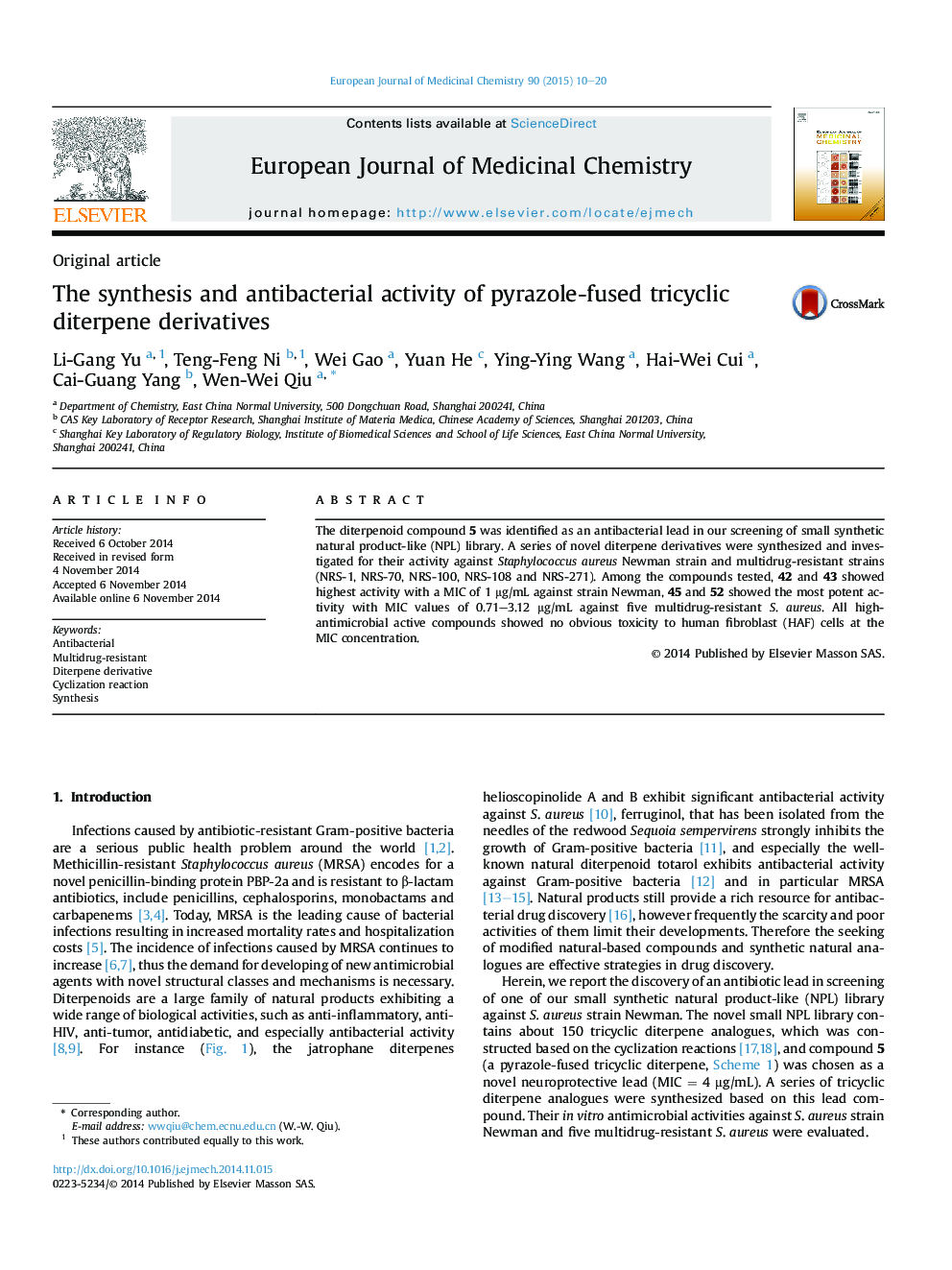| Article ID | Journal | Published Year | Pages | File Type |
|---|---|---|---|---|
| 1395474 | European Journal of Medicinal Chemistry | 2015 | 11 Pages |
•The diterpenoid compound 5 was identified as an antibacterial lead.•A series of diterpene derivatives were designed and synthesized based on the lead.•The antibacterial activities were investigated against several Staphylococcus aureus strains.•Compounds 45 and 52 showed the most potent antibacterial activity.
The diterpenoid compound 5 was identified as an antibacterial lead in our screening of small synthetic natural product-like (NPL) library. A series of novel diterpene derivatives were synthesized and investigated for their activity against Staphylococcus aureus Newman strain and multidrug-resistant strains (NRS-1, NRS-70, NRS-100, NRS-108 and NRS-271). Among the compounds tested, 42 and 43 showed highest activity with a MIC of 1 μg/mL against strain Newman, 45 and 52 showed the most potent activity with MIC values of 0.71–3.12 μg/mL against five multidrug-resistant S. aureus. All high-antimicrobial active compounds showed no obvious toxicity to human fibroblast (HAF) cells at the MIC concentration.
Graphical abstractA series of novel natural product-like (NPL) diterpene derivatives were synthesized and investigated for their activity against Staphylococcus aureus Newman strain and multidrug-resistant strains (NRS-1, NRS-70, NRS-100, NRS-108 and NRS-271).Figure optionsDownload full-size imageDownload as PowerPoint slide
